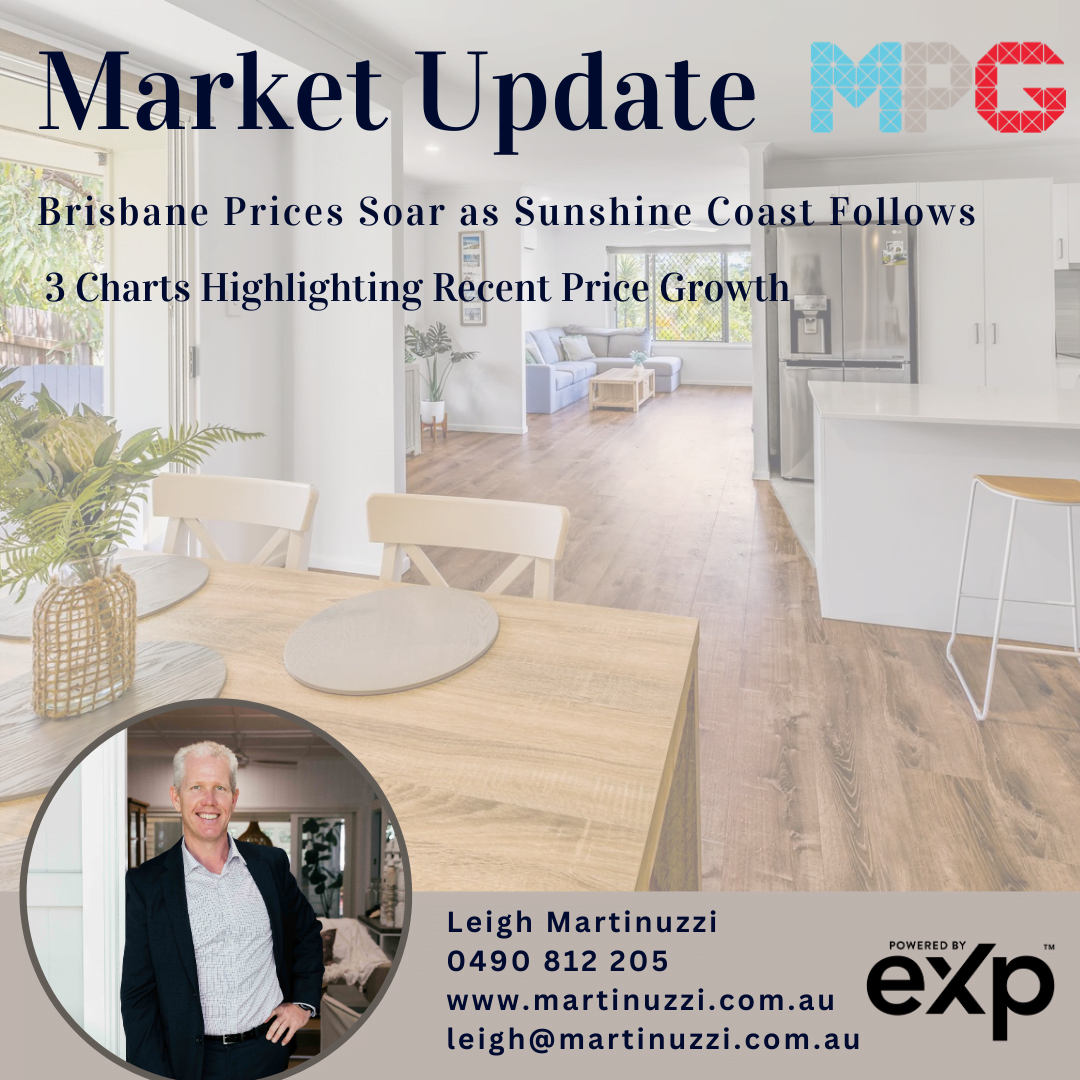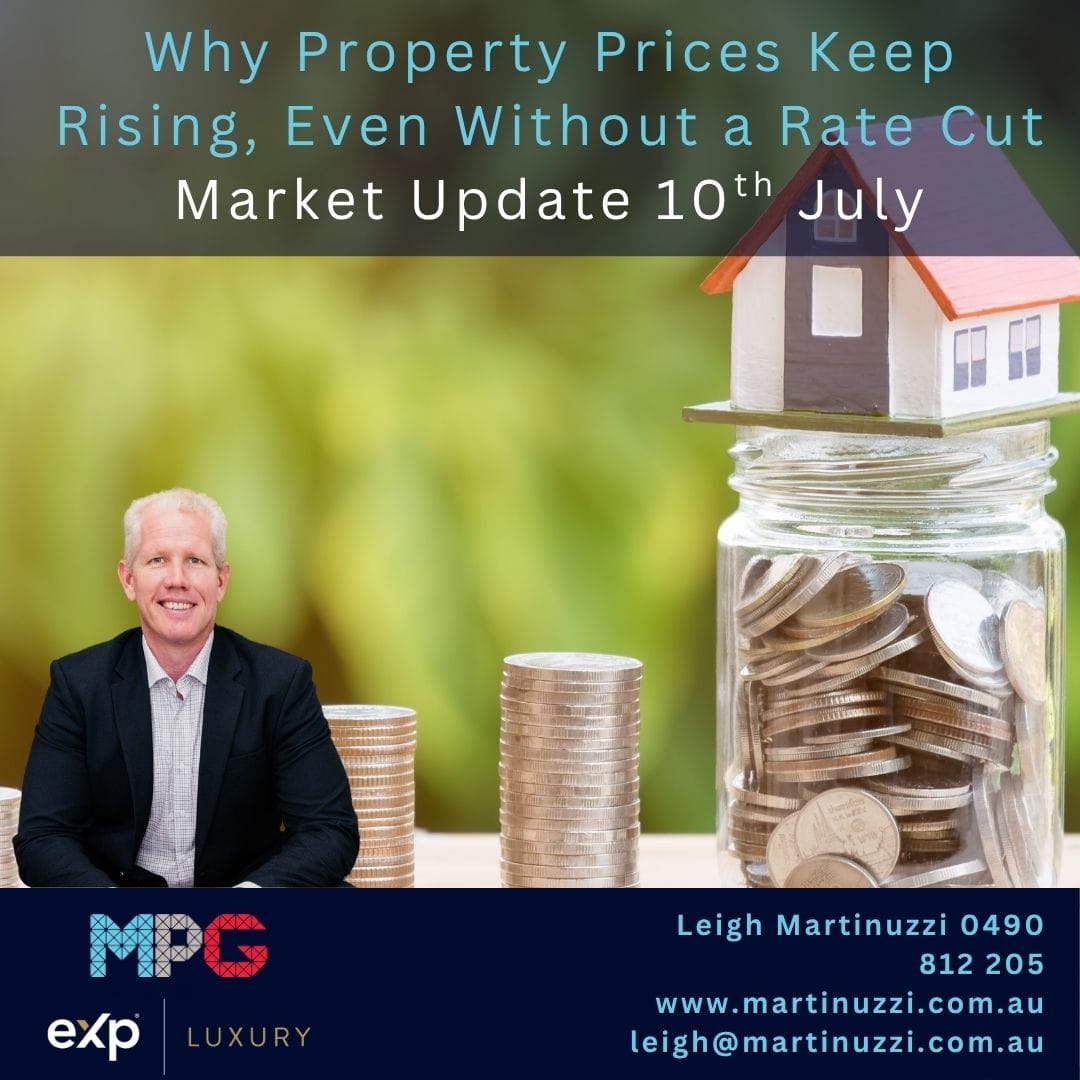Brisbane Prices Soar as Sunshine Coast Follows
Real Estate Market Update with Leigh Martinuzzi MPG
Brisbane has overtaken Canberra as the second most expensive city in Australia, trailing only Sydney. This ranking is based on the median house prices in our capital cities. In January, Brisbane surpassed the median house price in Melbourne, and now it has also now outpaced Canberra. According to CoreLogic, Brisbane’s current median house price is $937,479, which is $190 above the Melbourne median. One reason for this difference is the prevalence of unit sales in Melbourne, which are more common and can skew the overall median dwelling price.
In May, property prices across Australia rose by 0.8%, marking the largest gain since October 2023 and the 16th consecutive rise in property prices. Brisbane prices increased by 1.4% in May, and we’ve seen prices in the Sunshine Coast hinterland area rise to similar levels, ranging from about 1% and above. The key reason why prices continue to rise, even at a slower rate, is due to the extremely low stock levels across most markets in Australia. For instance, Brisbane’s stock levels are still 34% below the five-year average.
We are witnessing a very patchy market. Demand remains strong, and stock levels are low; however, buyer confidence is still somewhat shaky due to the high cost of living and housing unaffordability, leading to some level of uncertainty among buyers. Demand in the lower price categories is clearly strong, with homes in this category generating significant interest and often selling quickly for premium prices. New homes, near-new homes, and fully renovated homes are also bucking the trend and achieving incredible prices in short time frames. CoreLogic reports that in our capitals, upper quartile dwelling values are up 6.7% over the past 12 months compared with a 13.4% gain across the lower quartile of the market.
Finally, on population growth, the numbers don’t seem like they will be easing over the next 5 to 10 years. Immigration numbers are expected to stay high, and figures shared in the Matusik report this week show that annual population increases by up to 395,000 and for the next decade will average 359,000 residents, with natural attrition at about 65,000. There are key advantages to Australia’s immigration policy, including economic growth, cultural diversity, global competitiveness, and labour market needs. However, this doesn’t assist the housing crisis we face. While many homeowners might favour further price increases, the sustainability of further price hikes is not ideal for many. We need the government to step up and take more speedy action to address the shortage. It’s great to have the numbers, but we also need to house them.
I heard an analogy this week that put the housing issues we are facing into great context. It’s like the Hilton with 1000 rooms opening its doors to 3000 guests and just putting them anywhere they can fit—hallways, generator closets, bathrooms—and saying we will deal with it as it comes. Obviously, the room prices would be getting premiums, but many would be sleeping in less-than-ideal conditions. Instead, they could forecast future demand and put in place infrastructure that would help accommodate individuals and families comfortably without jacking up prices to unaffordable levels. The population forecast is there, but what are we doing about it?








